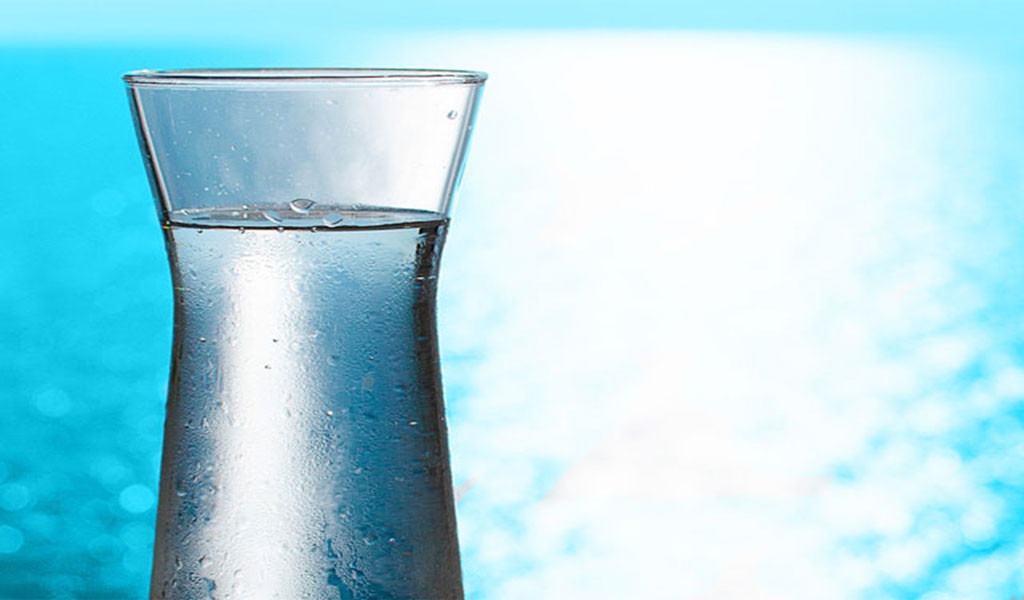
We have now internalized how healthy water is for our bodies. We consist of about 65 percent water, there is hardly a process in our organism that does not require water in order to run properly. Water bottles are omnipresent in all shapes and sizes, at work, during sport, in children’s hands and on advertising spaces. Tap water? Popelig. Regional mineral water – provincial. Anyone can do normal. Water is more than just a drink, it has become a healthy status symbol and a way of life – at least if you want to dig deeper into your wallet. But who benefits from this? The one who drinks it?
Design luxury water
It’s hard to believe, but it’s true: they do exist, the swarovski-set water bottles with Bling H2O from the USA, the Hildon luxury water from England or the FIJI water from the islands of the same name, which are just spelled slightly differently. The first thought when reading it: Wow, fancy. If you think further about what you have read, you might well ask yourself: Why is that?
We only have this one body, and we want the best for it. It should be healthy and fit and serve as a home for our spirit into old age without aches and pains.
Water is the best liquid we can provide our bodies with. Between 1.5 and 2 liters a day, a little more in the summer, and a little more during sports, and we are already a big step ahead in terms of health. It’s a good thing that hardly anyone dares to go out on the street with a soft drink bottle, let alone to the office or gym. But does that mean it has to be the glass bottle with glittering stones? Or the FIJI water flown halfway around the world? What is the difference to the clear water from the discount store or the mineral spring next door?
More than luxury?
What distinguishes them, the champagnes among waters that have now become a status symbol and an accessory for staging one’s own importance? First and foremost, the price. The luxury waters available in supermarkets are still within an acceptable price range. If you buy in more exquisite regions, the top-class premium waters will empty your account: For Canadian glacier water of the 10 Thousand BC brand, you pay 17 euros for three quarters of a liter, while a bottle of Kona Nigari, one of the most expensive waters in the world, will set you back several hundred euros.
The FIJI water is said to be bottled using a special process and thus comes into contact with the earth’s atmosphere for the first time when the bottle is opened. For lovers of virgin drinks, this may be an added value, but it is relatively irrelevant to health. This benefits much more from a balanced mineralized water, which is drunk well distributed throughout the day. This keeps the body sufficiently hydrated and gives it a bonus of minerals that reward you when you look in the mirror.
This mirror image might not look quite so good if you have drunk FIJI water beforehand, because your guilty conscience would have to kick in, and that certainly doesn’t look good. The carbon footprint of transporting this water halfway around the world is so devastating that no fancy-pants bonus can justify its purchase.
If you buy Bling H2O from Tennessee, it will at least come in a handmade glass bottle studded with genuine Swarovski crystals. If Bling slips out of your hand, it only makes a pling – the glass bottle at home can do that just as well. In view of the fact that Bling H2O only contains mineral water, which is available in abundance and in different mineralization and sparkling strengths in the local area, it is perhaps better to invest in the Swarovski on your finger or ear and try your hand at the local water counter.
Why wander into the distance
Water is still water and good is good enough. Our tap water, for example, is more than that. As the best-tested foodstuff, it is delivered to your doorstep free of harmful substances at very moderate prices and can be filled into bottles of any shape after we have bubbled it. Depending on its geographical origin, it contains more or less minerals. If that’s not enough for you, there are around 500 different mineral waters in Germany. There are great regional differences in terms of mineral content and taste, so that there is something for every taste and every need.
The main thing is to drink!
Whether you really need the expensive prestige water from Timbuktu or simply drink local tap or mineral water: The priority is to do this regularly and in sufficient quantities. This provides the body with sufficient fluids and minerals, which is beneficial for health and appearance. If you care a lot about appearances, it may well be a fraudulent label for everyday use. The bling bottle is quickly filled under the tap, we know what we’re drinking and our conscience can rest. That really is drinking with added value.
